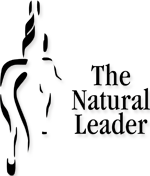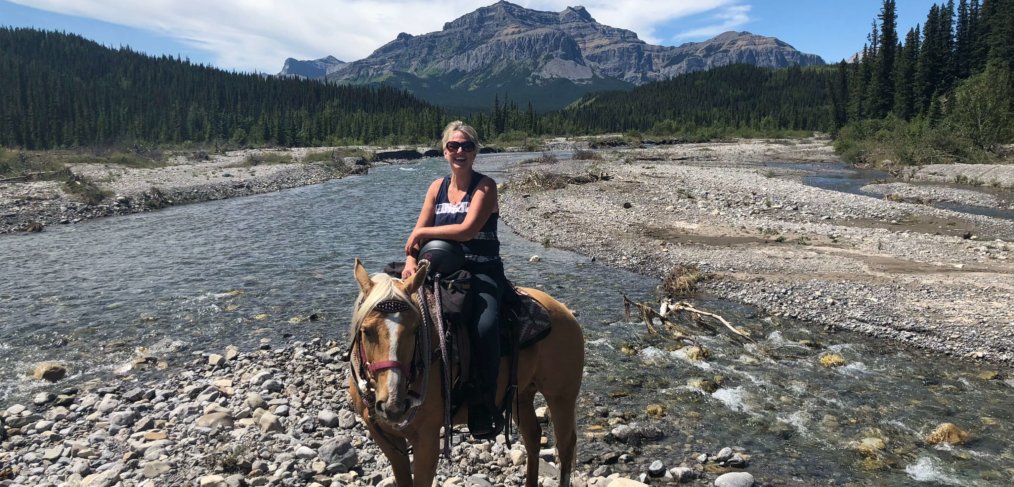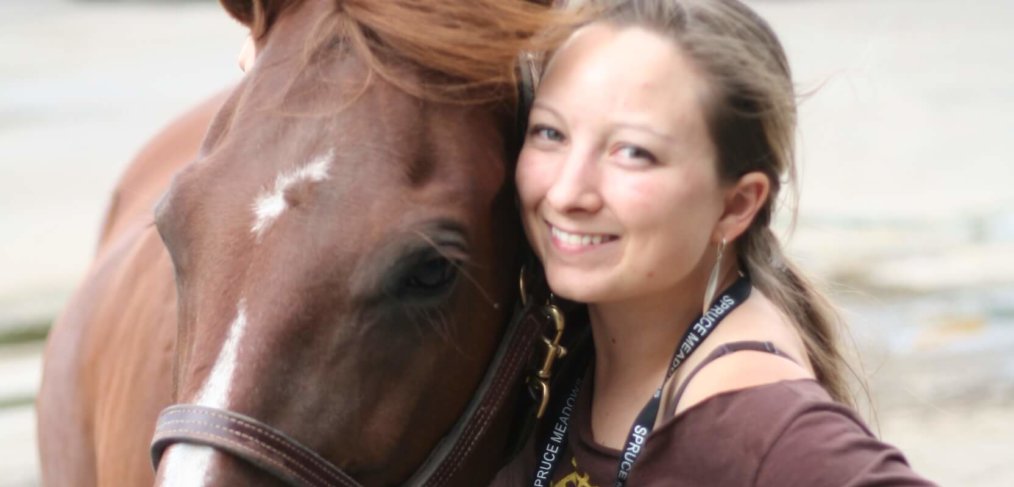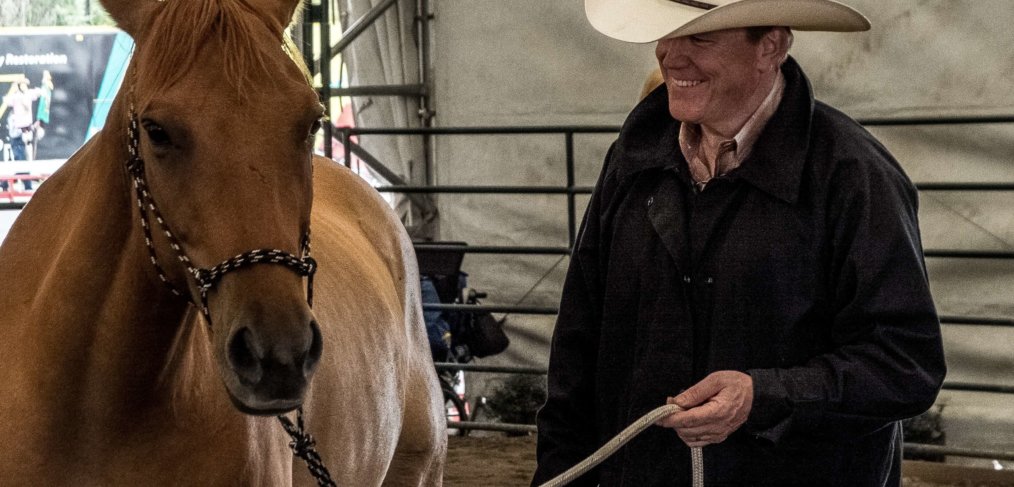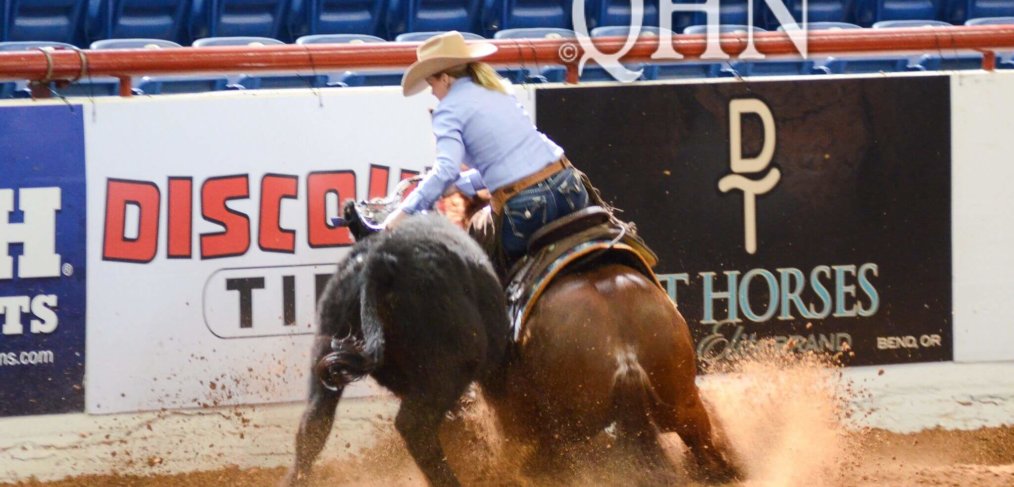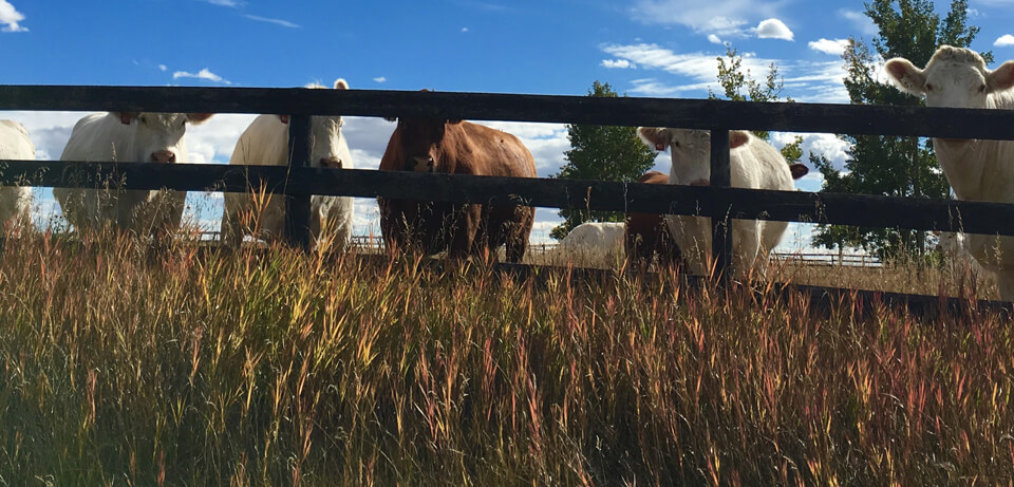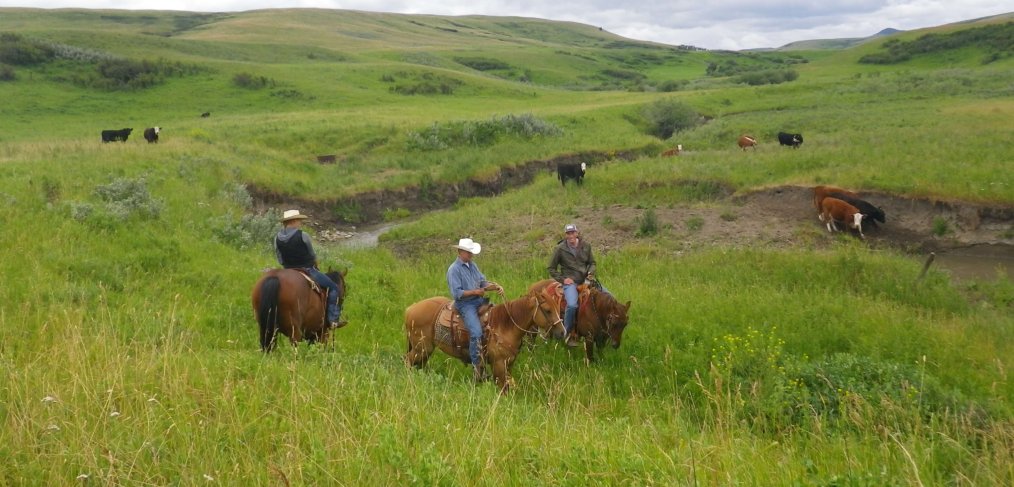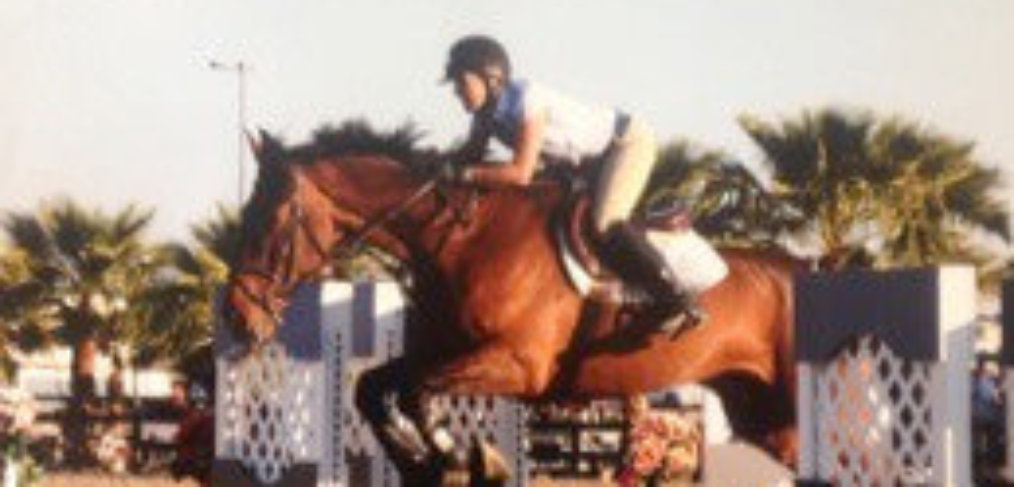Janice Webster is Senior Vice President Human Resources at Solium. For over twenty years she has been enabling high-performing organizations to excel. She admits these past three years have changed her through what she has learned from the two horses she and her husband now own. In this interview Janice explores what horses have taught her about herself, life and work. You could say it has been a fast ride!
December 2019 – Carey awarded one of Canada’s Top 40 under 40. A program that identifies outstanding achievers, visionaries and innovators, changing the way things are done. Congratulations Carey.
—
Horses are sanctuary for the President of Arnett & Burgess Pipeliners.
Carey’s story with horses goes back a long way. When she was seven she brought home a riding lesson brochure and announced she wanted to ride. “My grandfather thought he’d start me off with a month of lessons to see if I was really interested. I never let my parents quit.”
Carey was hesitant on the question about how many horses she has “they’re a little like potato chips you can’t have just one.”
Feel, timing and balance. You can’t improve on those three words when working with a horse. You can’t have one without the other and each builds on the previous in an ongoing progression.
Feel is about the relationship between two individuals, it is the give and take in a conversation. Timing is about when to ask, when to listen and when to just sit. Finally, without balance nothing else works.
In my world, leadership and horsemanship are inextricably linked. So feel, timing and balance could also describe the role that Dave Mowat has played at ATBFinancial the past eleven years.
Timing is everything. Dave recently announced he is set to retire in June 2018 as President and CEO of ATBFinancial. The timing of Dave’s departure is most interesting, Dave is leaving when everything feels good. Through his tenure ATB’s assets have grown to $49.6 billion from $20.3 billion, revenue has doubled to $1.5 billion and branch footprint grown by 9%. That is quite an accomplishment in an economic environment that has been anything but great in Alberta for a number of years.
Terri Holowath attained the title in 2015, winning every event she and her horse Jade (Red Hot Jade) entered in the National Reined Cow Horse Association Tour (NRCHA). Not bad for a part-time rider in the non-pro two rein working cow horse category. Her other full-time position, Managing Partner/CEO with Catalyst LLP in south Calgary, Alberta.
If you are looking for someone to create an effective tax strategy or succession plan for your agriculture operation or small business. You might want to connect with Colette Miller, a partner with Wilde and Company Charter Professional Accounting and Director on the Board of ATBFinancial. My conversation with Colette began in her office and continued enroute to meeting with AVAC Ltd., a not for profit company she has been a Director with since 2010.
Our conversation was neither strategy or succession planning but rather how Colette’s relationship with horses has contributed to who she is today.
Colette appears to lead a full and busy life. Along with raising four kids, her partnership with Wilde & Company and the board positions she holds, Colette and Craig run a mixed grain and cattle operation outside of Vegreville, Alberta.
Many years and successes later, Lowy’s current role is President and CEO of Sproule. It is the weekend trips to his ranch in southern Alberta that offer a respite from a busy international travel schedule. Where once again the rhythm of animals influence the pace, this time less regimented. Riding the hills have become a place to clear his mind and bring focus, the horses Lowy finds, help him “see things from a whole different perspective”.
This blog has typically captured my leadership learning through horsemanship journey, but there are a lot of horses in Alberta and that got me wondering “How have horses influenced others on their leadership journey?
So I began asking. In the coming months I will be publishing a series of interviews with those willing to share what they have learned about their leadership from their relationship with horses.
 Do people really understand what you are saying? The question came to mind while watching a recent Buck Brannaman clinic.
Do people really understand what you are saying? The question came to mind while watching a recent Buck Brannaman clinic.
Since the release of the movie BUCK, people have flocked to his clinics. Perhaps drawn by fame, the romantic image of the cowboy or simply because he is a fabulous horseman. An entertainer as well Buck speaks in metaphor and through stories of his own experience. The classes are large so he suggests “if you behave like an alcoholic you will always think I am talking about you”. Hoping the magic will rub off, people and horses “waller” around the arena for three to four days, often never to return.
For a number of years I have made the drive to Montana to ride with Buck. This year friend, and co-facilitator in The Natural Leader programs, Kristen Cumming came along. Enjoying a cold beer after a long hot day in the arena, a brilliant idea surfaced. Buck needs an interpreter! We laughed at the thought of Kristen, in plain language, doing voice over to what Buck was saying. While it was in good fun, I have to admit the idea has merit.
It was most apparent when he demonstrated a pretty basic maneuver, “With your rein ask your horse to step over with his front feet”, the instruction continues, “open the door for your horse to move through”. Watching people can be painful as their frustration becomes evident as they try harder to do what they don’t understand.
The conversation around “open the door” and the actual meaning of “shift your weight out of the way of the horse’s leg” had me wondering how many people truly understand what their leaders are saying.
All organizations create their own language to set annual goals and objectives, define the quarterly expectations or even the task for the day. Done to aid in the effectiveness and efficiency of communication, just as metaphors do, acronyms replace department names, strategic plans, and programs, meetings are often conducted as if everyone understands the expressions and language. As a leadership consultant, I often find myself asking for the definition so as not to be left behind.
Communication is a common topic in The Natural Leader programs. As people work through an activity with a horse what quickly becomes clear is how much we assume we are communicating when in reality we are possibly only delivering half the message.
Effective communication shows up through the clarity of our intention, actions, emotions and the words we choose, the impact on others shows up in their actions or lack of them. Consider when you have committed to an objective, or idea, and you don’t experience the enthusiasm you were expecting from your team. How do you interpret that? If they had an interpreter, what might they say to you?
People who don’t understand, don’t stay. It is not a reflection of the competency of the leader or their ability, it is simply a communication break down.
All the elements of the activity Buck demonstrated are there. His subtle actions are enough for the horse, but rarely enough for his larger audience, you have to be dedicated and observant. Without seeing the weight shift the metaphor of opening the door has no meaning. A few more specific and concise words would go a long way to more riders understanding how he achieves his results.
If you had an interpreter what words would they choose to complete your thought?
——-
Nancy Lowery, lives and works in Calgary Alberta Canada. Her business The Natural Leader offers powerful leadership training through interactions with horses.
 You are buckled in, you notice the flight attendant going through the motions of the safety demonstration. The short delay announcement frustrates you and yet you find yourself gripping the armrest as if the plane relied on this very effort to lift it off the tarmac.
You are buckled in, you notice the flight attendant going through the motions of the safety demonstration. The short delay announcement frustrates you and yet you find yourself gripping the armrest as if the plane relied on this very effort to lift it off the tarmac.
Our irrational fear of flying was the topic of Michael Enright’s radio interview with Author and First Officer Patrick Smith. Smith suggests the fear is normal and natural, admitting there is something about being thousands of feet above the ground moving at hundreds of miles an hour that generates fear for anyone from passenger to pilot. As inherently unsafe as it may sound, flying has been engineered to be the very opposite.
Enright’s questions clearly reflected his own fear of flying, suggesting Smith’s version of a near miss sound more like a near hit. Smith offers that our fear of flying is more likely the result of an over active imagination, interpreting what we hear from the media rather than one based on facts.Smith dubs this the PEF or Passenger Embellishment Factor. The PEF exaggerates a 20 foot drop in altitude to thousands, a 20 degree bank turns into 60 and a lightening strike becomes a ball of light dancing down the aisle.
PEF easily translates to the Participant Embellishment Factor in The Natural Leader programs. To assess people’s comfort level before entering the arena we always ask. “On a scale of one to ten, one being fearful, ten meaning you might have experience with horses and are quite comfortable with the prospects of the day. What is your comfort level working with a horse?” The number of zero’s and negative numbers we have encountered of late is somewhat unsettling.
What I have noticed, rarely is there a bad experience to go with that fear, the horse simply represents an unknown. So the idea has worked them into such a state they hadn’t slept or were physically ill at the prospect of the day. Their imagination has filled in the blanks and created the “What if” scenarios for this large and powerful animal.
While the work with horses allows people to experience Leadership moments at the threshold of their comfort zone, fear can get in the way of that opportunity. Our goal is to ensure each person is supported through their learning experience in a manner that suits them best. The sessions often give participants a better understanding of when their fears of failing, or falling, are holding them back as leaders.
I have gained a lot of experience on managing fear around horses. You can’t simply tell someone “Don’t be afraid”, however we can provide information that is relevant and immediate, setting a goal that is attainable. So we start with breathing.
When we are fearful we tend hold our breath in anticipation. Our focus of attention is on the future not the present so we are rarely able to respond to the moment. Focusing on breathing helps people remain in the present so they can recognize and assess the physiological response they are experiencing. Once they notice what is happening in their body they are more likely to be able to name it and therefore manage the emotions associated with the feeling.
One reference tool we have used in our programs is The Awareness Wheel, adapted by Jacques & Associates from the work of Miller, Wackman, Nunnally and Saline. The tool helps bring forward a dialogue on what has generated a reaction or an emotion so we might be more thoughtful in our response. Getting participants to focus on their breath helps them become more present to what might be actually happening in the present.
So the next time you find yourself gripping the armrest like everyone’s life depends on it, remember to breathe. Relax your body and your mind so you can actually enjoy the flight.
CBC Radio Interview >>http://www.cbc.ca/player/Radio/The+Sunday+Edition/Segments/ID/2416721253/
Photo: Oliver getting his Ya Ya’s out before I get on!
 How well can you or your employees articulate the operating principals, vision or values of your organization? Like most companies I have put a lot of effort into creating these statements for The Natural Leader and realised I had missed communicating a basic operating principal to my own team when the question was asked “Wouldn’t it be easier to use disposable dishes for the meals at the sessions?”
How well can you or your employees articulate the operating principals, vision or values of your organization? Like most companies I have put a lot of effort into creating these statements for The Natural Leader and realised I had missed communicating a basic operating principal to my own team when the question was asked “Wouldn’t it be easier to use disposable dishes for the meals at the sessions?”
Having recently completed a comprehensive manual for my Wranglers with a Difference, those who assist in The Natural Leader programs I had neglected to express the core value of Environmental Responsibility.
I can’t help but see the irony of the oversight. Values are a basic leadership concept we explore through our programs. A horse lives by the most basic of values, their lives, every action or reaction a horse makes is based on that value. What we value is the foundation of our leadership philosophy and style and will be reflected in what we do and how others see us.
As organisations we put together our websites, press releases and visions statements assuming everyone who works with us will know and live by what we have produced. The problem is not everyone is involved with creating that material so how do you get their buy-in?
Repetition is the foundation of teaching a new activity or behaviour to a horse. Repetition reinforces an idea and solidifies the learning and if leadership is about walking the talk, some messages are simply worth repeating.
An oversight easily fixed has introduced a whole new way of thinking about how I engage my Wranglers with a Difference. As the face of The Natural Leader their understanding of why we do things certain ways is important to the messages they convey to those who participate in our sessions.
The Natural Leader vision, values and operating principals continue to be a work in progress. I will repeat and reinforce the ideas and core values I would like The Natural Leader to be recognised by through engaging the individuals who help make us successful.
———————————————-
How life will throw you a curve when you least expect it! Here I am writing about the value of life and sadly my nephew decided his wasn’t worth saving. Colin struggled with depression for a couple of years and was unable to accept the love and help of those he mattered most to. While we differ from animals with our ability to reason and rationalize, there are some questions we simply cannot answer. Colin has found the peace he was seeking, now the search begins for those he left behind.
